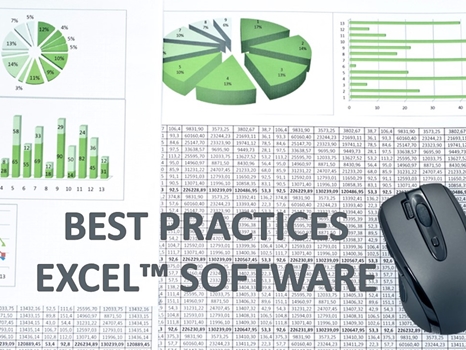

Developing Excel™ VBA Software
Excel™ has to be the most used product in business today. Many people take Excel™ training courses, but the vast majority of people only have a rudimentary grasp of Excel™. The objective of this training program is to go beyond that rudimentary grasp to provide people with the skills they need to develop powerful applications in Excel™. The goal is not necessarily to turn the student into a programmer – the student needs to gain a lot of practice to get to that level – but into a “power user” who can implement Excel™-VBA solutions to streamline business operations. Since people asked to learn how they could create their own solutions similar to the examples created for the training courses, this 4-part course is a good starting point to begin exploring what you can do with Excel™.
In this course we assume you already have a basic grasp of Excel™ so you are not unaware how you can use the system in a passive, data-focused manner. Anyone who has gone through our business courses will have used Excel™ workbooks at some point. It is different to use an existing workbook compared to designing a workbook with embedded logic. We will review the Excel™ functionality because when we use VBA we need to manipulate that functionality. That way we look for Excel™ solutions rather than to program around Excel™ and forego all the things it can do very efficiently.
Excel™ Cell Formulas - Introduction BPEV_VB1
This is an Excel™ course that is focused on customizing the worksheet functionality with cell formulas that can deliver a lot of power if you know how that is done. Even plain Excel™ packs a lot of power to allow us to create worksheets that can resolve rather complex problems. There are too many possible application areas in which Excel™ can be deployed, so we stick with using Excel™ for a simple project management business case and a simple business accounting system that are implemented purely in Excel™, and purely to prove the point of what it can do for you.
Excel™-Visual Basic – Worksheet Macros BPEV_VB2
This second level Excel™ course goes on to demonstrate how to use the built-in Macro Capture capabilities in order to get a start in VBA programming, where the macro is stored as an executable subroutine that performs a single function. We show how you can explore a macro that is produced by Excel™ and transform the VBA code into a routine that can be embedded into a full-fledged VBA application (that, by the way, is still considered a macro by Excel™).
Excel™-Visual Basic - Programming BPEV_VB3
This third level is a course in VBA logic programming: that enables you to build more complex logic to perform many unique tasks. We show “handy” routines, tools, and techniques to get you started on custom solutions to automate your internal processes using Excel™. Basic really is an easy to learn language, and while the Visual Basic extension introduced complexity that we can do without, the Excel™ framework removes that complexity by delivering the capabilities in a predefined format that is extremely easy to work with.
Excel™-Visual Basic – Data Management BPEV_VB4
This final course details how to use the Excel™ workbook as a database and develop logic to perform extremely complex processing. Although we already introduced the worksheet logic, given the framework and how we can load data into that framework to let Excel™ help us with all kinds of business analytic, we now take it a notch higher to make sure you have the capability to front-end business application systems in order to deliver the management decision reports.
 |
|